-
 Bitcoin
Bitcoin $112400
0.86% -
 Ethereum
Ethereum $4509
-0.37% -
 XRP
XRP $2.968
-0.52% -
 Tether USDt
Tether USDt $0.9999
-0.02% -
 BNB
BNB $876.4
2.10% -
 Solana
Solana $214.3
4.69% -
 USDC
USDC $0.9998
-0.01% -
 Dogecoin
Dogecoin $0.2241
1.86% -
 TRON
TRON $0.3447
-0.45% -
 Cardano
Cardano $0.8586
0.25% -
 Chainlink
Chainlink $25.26
5.76% -
 Hyperliquid
Hyperliquid $45.95
-3.38% -
 Ethena USDe
Ethena USDe $1.001
-0.01% -
 Sui
Sui $3.491
0.92% -
 Stellar
Stellar $0.3830
0.57% -
 Cronos
Cronos $0.3333
27.15% -
 Bitcoin Cash
Bitcoin Cash $557.0
0.74% -
 Avalanche
Avalanche $24.75
0.77% -
 Hedera
Hedera $0.2406
0.46% -
 UNUS SED LEO
UNUS SED LEO $9.561
-0.08% -
 Litecoin
Litecoin $113.8
0.74% -
 Toncoin
Toncoin $3.187
1.26% -
 Shiba Inu
Shiba Inu $0.00001264
0.86% -
 Polkadot
Polkadot $3.995
3.37% -
 Uniswap
Uniswap $10.04
1.61% -
 Dai
Dai $0.9999
-0.01% -
 Bitget Token
Bitget Token $4.603
-0.87% -
 Monero
Monero $269.4
-1.07% -
 Aave
Aave $317.5
-1.55% -
 Ethena
Ethena $0.6731
10.25%
What is a vesting period in crypto?
Vesting periods in crypto ensure long-term commitment by gradually releasing tokens, preventing early dumps and aligning stakeholder incentives.
Aug 29, 2025 at 01:14 pm
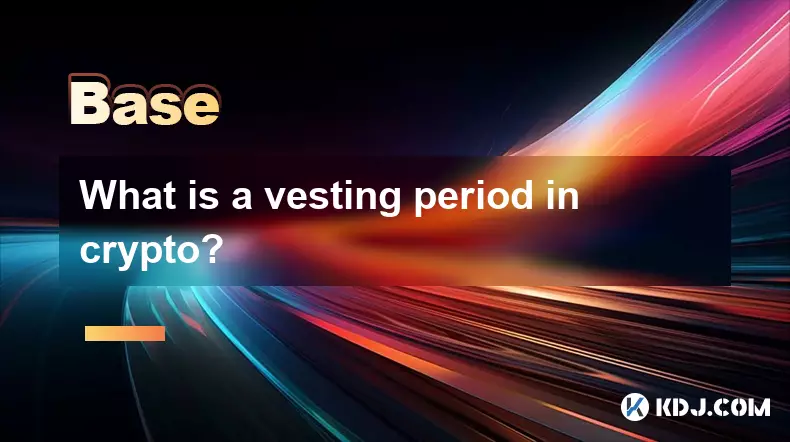
Understanding the Vesting Period in Cryptocurrency Projects
1. A vesting period in crypto refers to a predetermined timeframe during which tokens or coins allocated to team members, advisors, investors, or early contributors are locked and cannot be freely traded or transferred. This mechanism is widely used in blockchain projects to ensure long-term commitment and prevent immediate dumping of tokens on exchanges.
2. The primary goal of a vesting schedule is to align incentives among stakeholders. By gradually releasing tokens over time, projects discourage short-term speculation and promote sustained involvement from core contributors. This structure fosters trust within the community by showing that insiders are committed to the project's long-term success rather than quick financial gains.
3. Vesting periods can vary significantly in length and structure. Some projects implement monthly releases over two to four years, while others may include cliff periods—specific durations after which a portion of tokens becomes available all at once. These schedules are typically outlined in project whitepapers or tokenomics documents.
4. Smart contracts often enforce vesting terms on blockchain networks. Once deployed, these contracts automatically distribute tokens according to the predefined rules, reducing the need for manual oversight and minimizing the risk of manipulation or early release.
5. Public transparency around vesting schedules has become a key factor in investor evaluation. Projects that clearly communicate their token distribution and vesting timelines tend to gain higher credibility in the decentralized finance (DeFi) and broader crypto ecosystem.
Benefits of Implementing Vesting Schedules
1. Vesting periods help stabilize token prices during the early stages of a project’s launch. Without such controls, a large volume of tokens entering the market immediately could lead to sharp price drops due to oversupply.
2. They protect retail investors by ensuring that insiders do not profit at the expense of the public. When team tokens are locked, it signals confidence in the project’s future and reduces the likelihood of exit scams or rug pulls.
3. Long-term development is encouraged as founders and developers remain financially invested in the project’s progress. This continuity supports consistent updates, roadmap execution, and active community engagement.
4. Institutional investors often require strict vesting terms before participating in private sales. Their involvement brings legitimacy and additional capital, both of which are crucial for scaling blockchain initiatives.
5. Projects with well-structured vesting mechanisms are more likely to be listed on major exchanges. Exchange listing teams review token distribution models closely, and fair vesting practices improve the chances of approval.
Risks and Challenges Associated with Vesting Models
1. If vesting periods are too restrictive, they may discourage top talent from joining a project. Skilled developers and marketing professionals might prefer opportunities with faster liquidity options.
2. Market conditions can change dramatically over extended vesting timelines. A team locked into a four-year schedule might face financial pressure if the token value drops significantly, affecting morale and retention.
3. Some projects have faced backlash when large volumes of tokens unlock simultaneously after a cliff period. These events can trigger sell-offs, increasing volatility and undermining investor confidence.
4. Transparency issues arise if vesting details are not disclosed upfront. Hidden allocations or unclear release schedules can damage a project’s reputation and lead to accusations of unfair distribution.
5. Smart contract vulnerabilities pose a risk even with automated vesting. Bugs or exploits in the code could allow unauthorized access to locked tokens, compromising the entire distribution model.
Fair Launch and Community Trust
1. A fair launch emphasizes equal opportunity for all participants, and vesting plays a critical role in achieving this balance. When early investors and team members are subject to the same lock-up rules, it reinforces the principle of fairness.
2. Communities often scrutinize the percentage of tokens allocated to insiders versus public sale participants. Projects that reserve excessive amounts for private investors with lenient vesting terms may be perceived as centralized or profit-driven.
3. Open-source projects benefit from vesting because contributors can see exactly how and when rewards will be distributed. This visibility strengthens collaboration and encourages open participation in development efforts.
4. Decentralized autonomous organizations (DAOs) use vesting to manage treasury funds and reward long-term contributors. By locking governance tokens, DAOs ensure that decision-making power remains distributed over time.
5. Public dashboards that track vesting progress enhance accountability. Real-time data on token unlocks allows investors to anticipate supply changes and make informed decisions without relying solely on project announcements.
FAQs
What happens when a vesting period ends?When a vesting period concludes, the locked tokens are released to the designated wallets according to the smart contract rules. Holders can then transfer, trade, or stake them based on their preferences and market conditions.
Can vesting schedules be modified after deployment?Once a vesting contract is deployed on the blockchain, it generally cannot be altered unless it includes upgradeable functions. Most secure implementations are immutable to prevent tampering and ensure trustless execution.
Do all crypto projects use vesting periods?No, not all projects implement vesting. However, reputable ones typically do. Projects without any form of token lock-up may raise red flags among experienced investors due to the increased risk of immediate sell-offs.
How are vesting periods enforced technically?Vesting periods are enforced through smart contracts programmed with specific release conditions. These contracts reside on the blockchain and automatically execute token transfers when time-based or event-based criteria are met.
Disclaimer:info@kdj.com
The information provided is not trading advice. kdj.com does not assume any responsibility for any investments made based on the information provided in this article. Cryptocurrencies are highly volatile and it is highly recommended that you invest with caution after thorough research!
If you believe that the content used on this website infringes your copyright, please contact us immediately (info@kdj.com) and we will delete it promptly.
- Bitcoin Price Prediction: Institutional Wave Meets Reality Check, Says Research Firm
- 2025-08-29 15:30:16
- US ETFs, Bitcoin, and Spot Trading: A New Era?
- 2025-08-29 15:05:13
- Ethereum, X Layer, and OKX's Big Bet: What's the Buzz?
- 2025-08-29 15:30:16
- BullZilla, Dogecoin Pepe & the Meme Coin Mania: What's the Next Big Thing?
- 2025-08-29 16:05:14
- Ethereum: Wall Street's Token of Choice?
- 2025-08-29 12:45:13
- Cryptos with Massive Upside: Top Buys to Watch Now
- 2025-08-29 13:05:15
Related knowledge

What is a crypto ATM and how do I use one?
Aug 29,2025 at 01:42pm
What Is a Crypto ATM?1. A crypto ATM is a physical kiosk that allows users to buy or sell cryptocurrencies using cash or a debit card. Unlike traditio...

What is a vesting period in crypto?
Aug 29,2025 at 01:14pm
Understanding the Vesting Period in Cryptocurrency Projects1. A vesting period in crypto refers to a predetermined timeframe during which tokens or co...
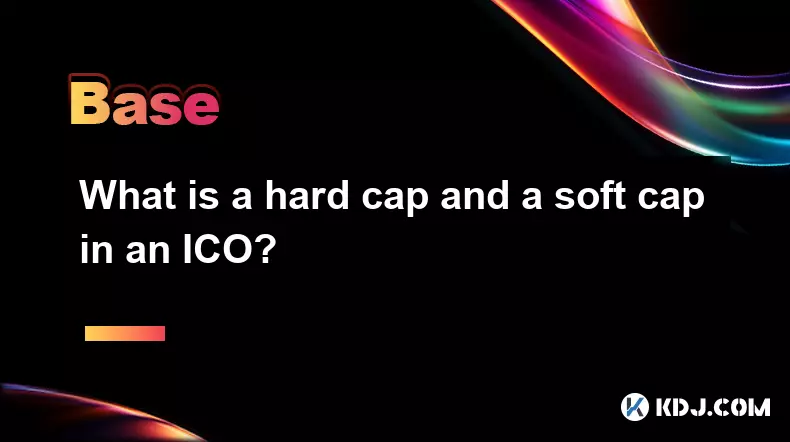
What is a hard cap and a soft cap in an ICO?
Aug 29,2025 at 03:00pm
Understanding Hard Cap and Soft Cap in ICOsIn the world of cryptocurrency and blockchain fundraising, Initial Coin Offerings (ICOs) have become a popu...
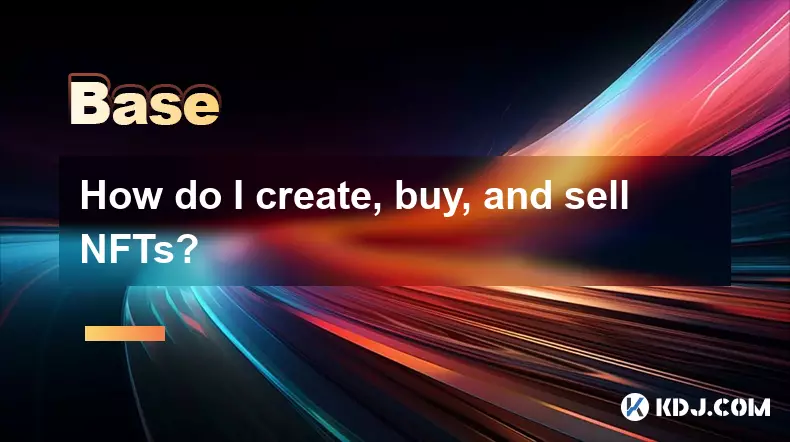
How do I create, buy, and sell NFTs?
Aug 29,2025 at 03:55pm
Creating NFTs: A Step-by-Step Guide1. Choose a blockchain that supports NFTs, such as Ethereum, Solana, or Polygon. Each has different fee structures ...
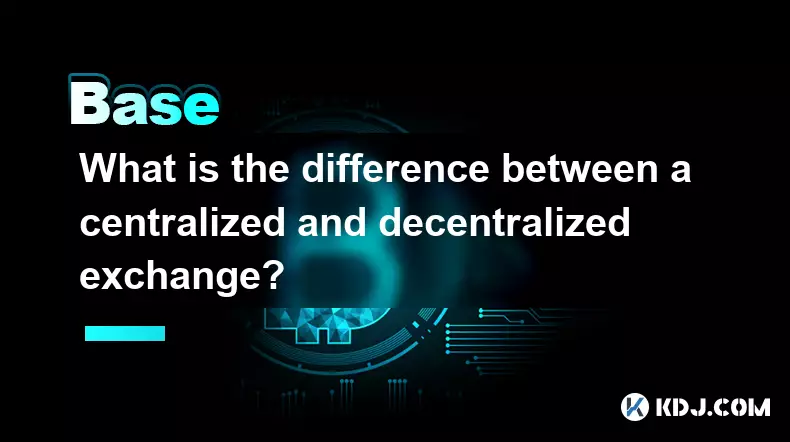
What is the difference between a centralized and decentralized exchange?
Aug 29,2025 at 11:01am
Understanding Centralized Exchanges1. Centralized exchanges, commonly referred to as CEXs, operate under a single authority that manages all aspects o...
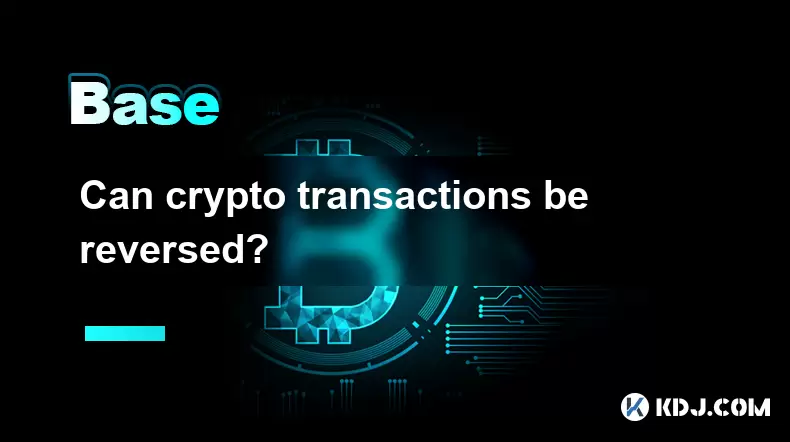
Can crypto transactions be reversed?
Aug 10,2025 at 01:35am
Understanding the Immutability of Blockchain TransactionsCryptocurrency transactions are built on blockchain technology, which is designed to be immut...

What is a crypto ATM and how do I use one?
Aug 29,2025 at 01:42pm
What Is a Crypto ATM?1. A crypto ATM is a physical kiosk that allows users to buy or sell cryptocurrencies using cash or a debit card. Unlike traditio...

What is a vesting period in crypto?
Aug 29,2025 at 01:14pm
Understanding the Vesting Period in Cryptocurrency Projects1. A vesting period in crypto refers to a predetermined timeframe during which tokens or co...

What is a hard cap and a soft cap in an ICO?
Aug 29,2025 at 03:00pm
Understanding Hard Cap and Soft Cap in ICOsIn the world of cryptocurrency and blockchain fundraising, Initial Coin Offerings (ICOs) have become a popu...

How do I create, buy, and sell NFTs?
Aug 29,2025 at 03:55pm
Creating NFTs: A Step-by-Step Guide1. Choose a blockchain that supports NFTs, such as Ethereum, Solana, or Polygon. Each has different fee structures ...

What is the difference between a centralized and decentralized exchange?
Aug 29,2025 at 11:01am
Understanding Centralized Exchanges1. Centralized exchanges, commonly referred to as CEXs, operate under a single authority that manages all aspects o...

Can crypto transactions be reversed?
Aug 10,2025 at 01:35am
Understanding the Immutability of Blockchain TransactionsCryptocurrency transactions are built on blockchain technology, which is designed to be immut...
See all articles

























































































